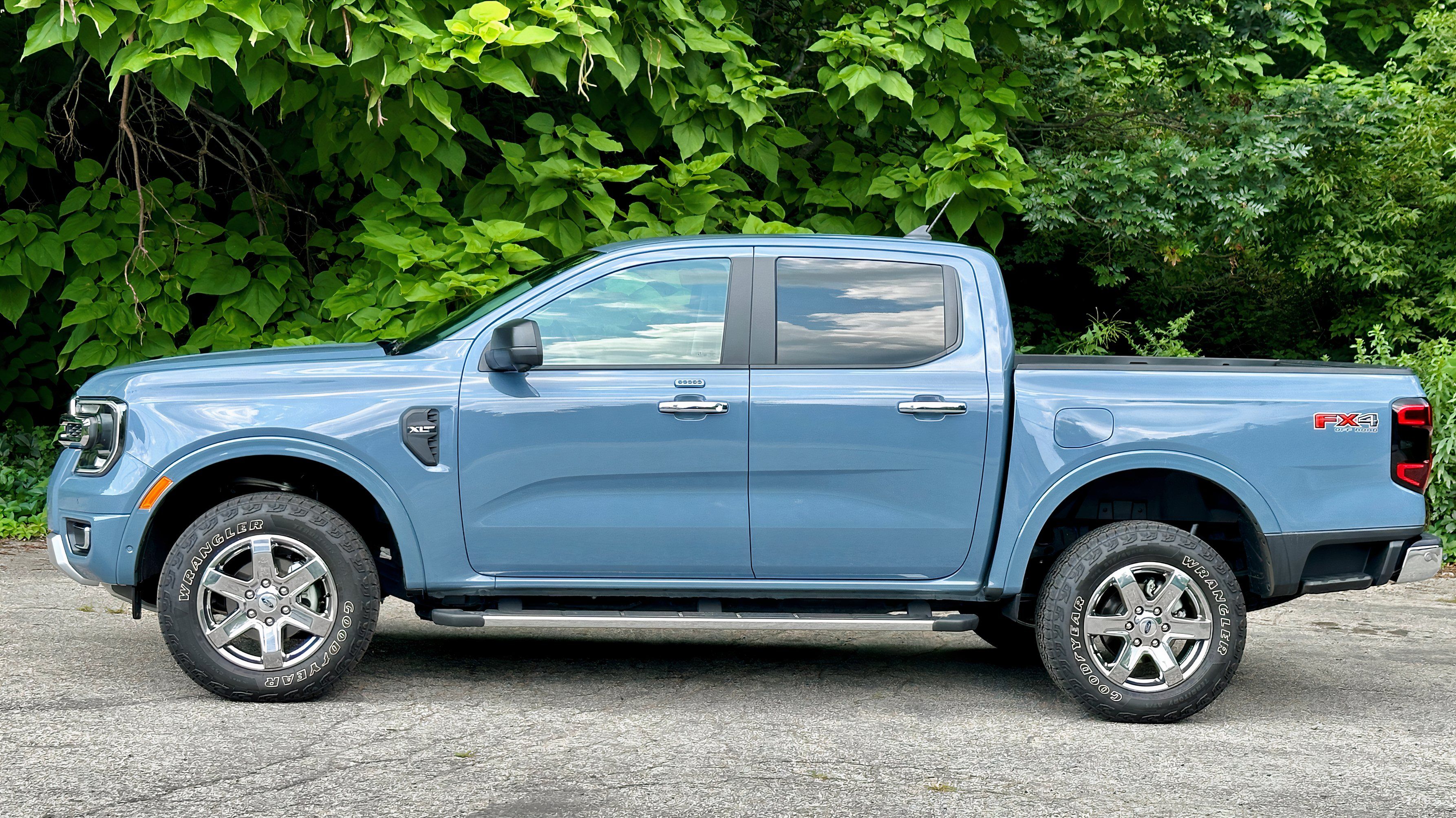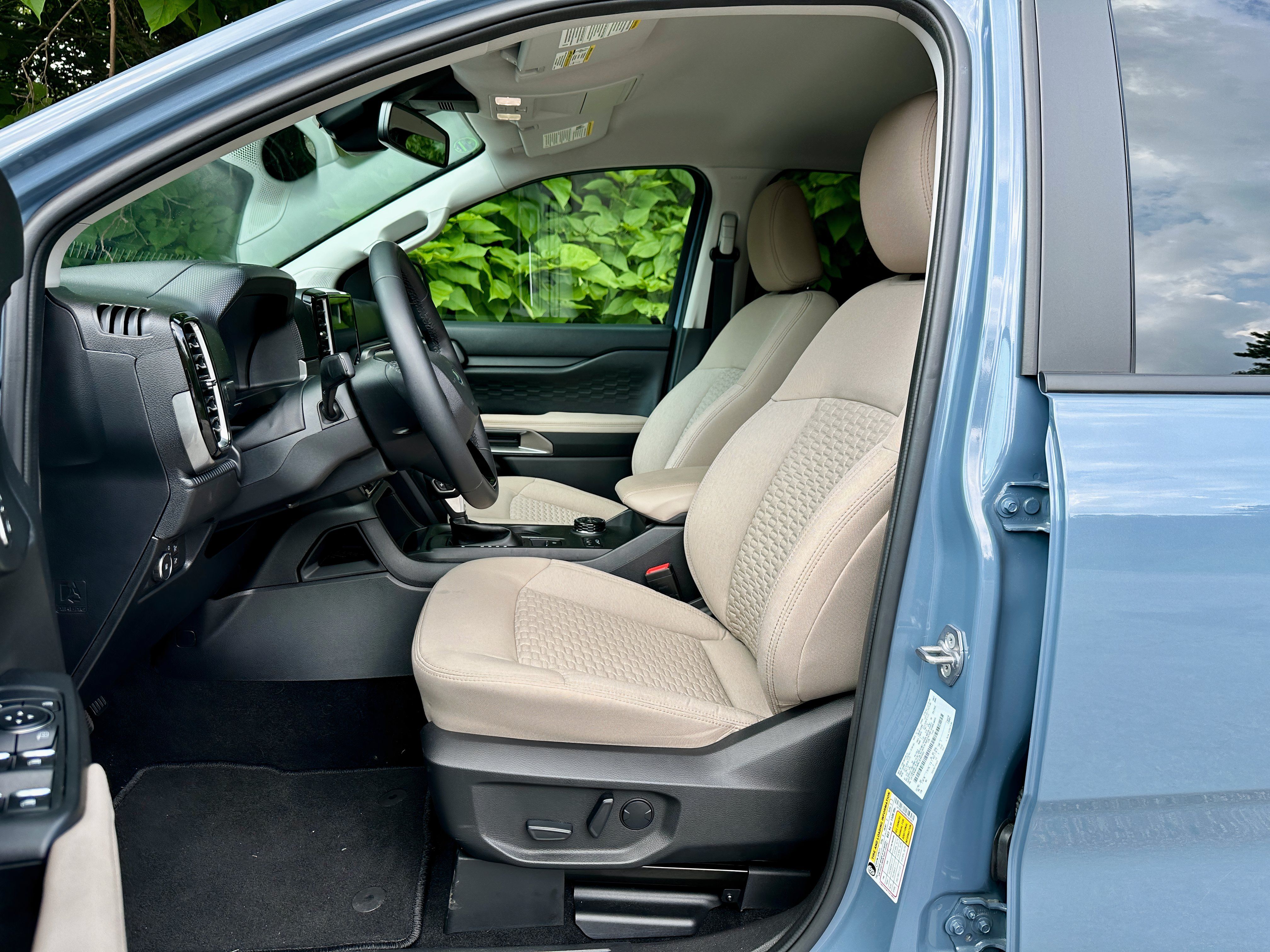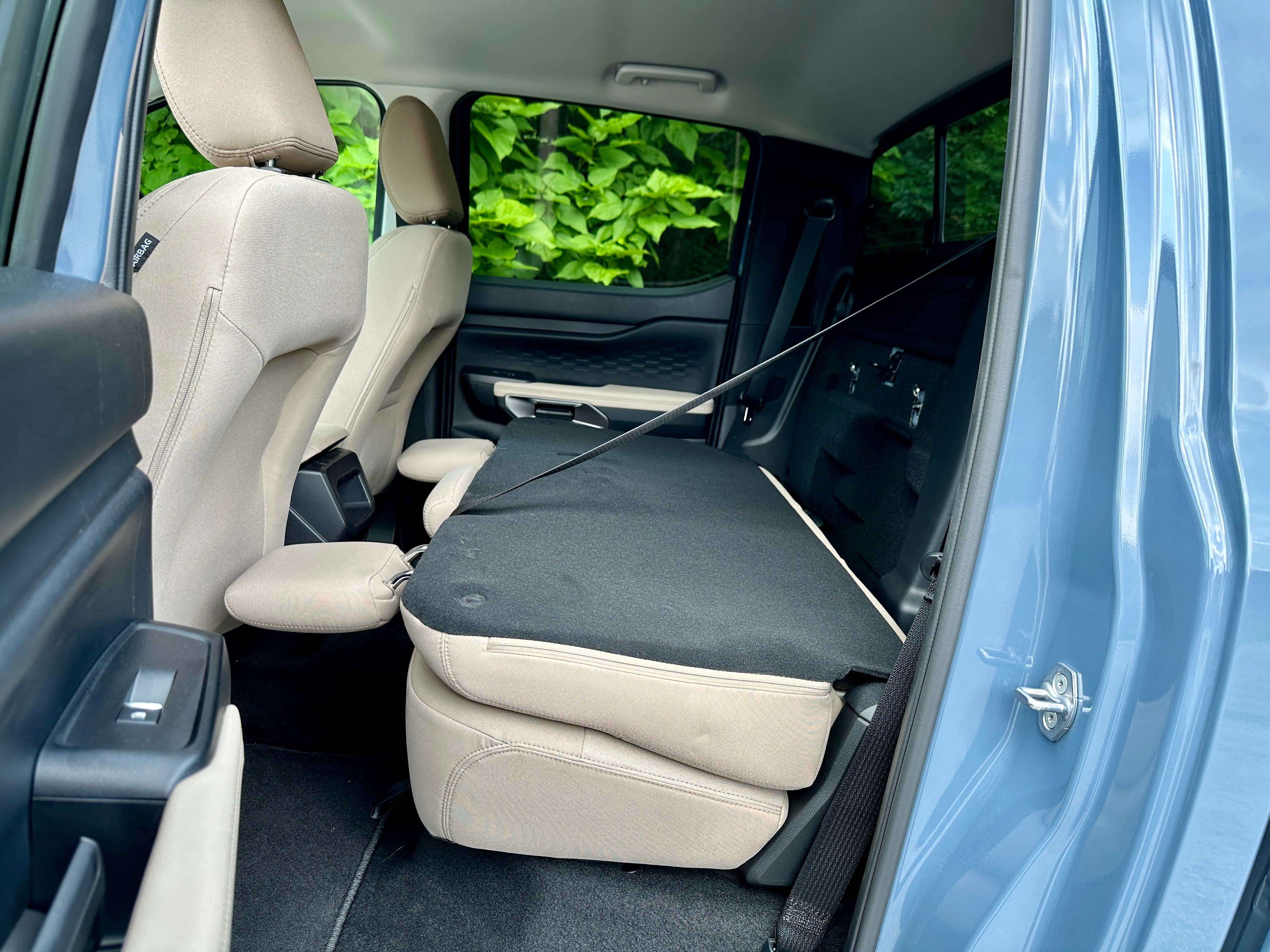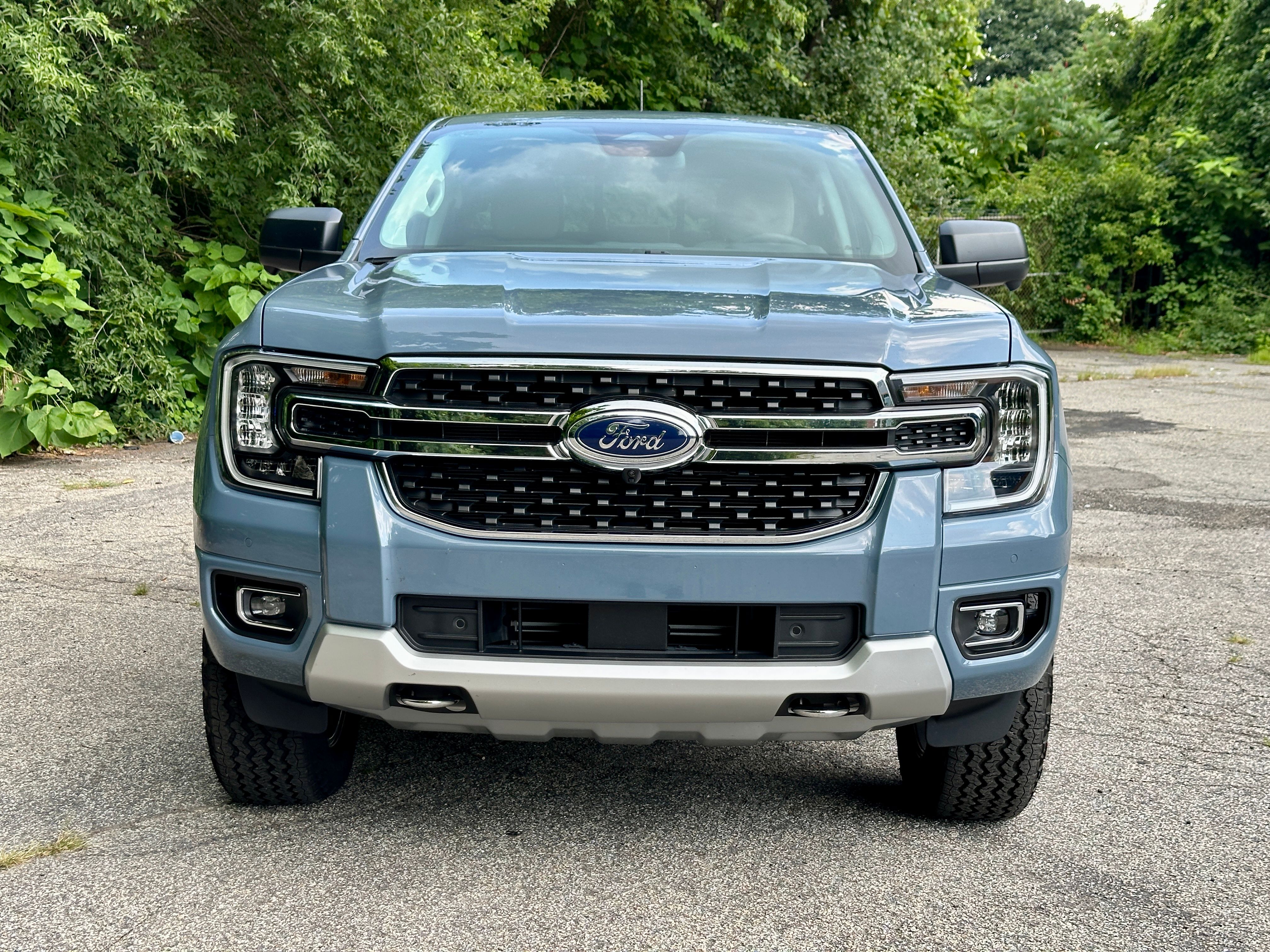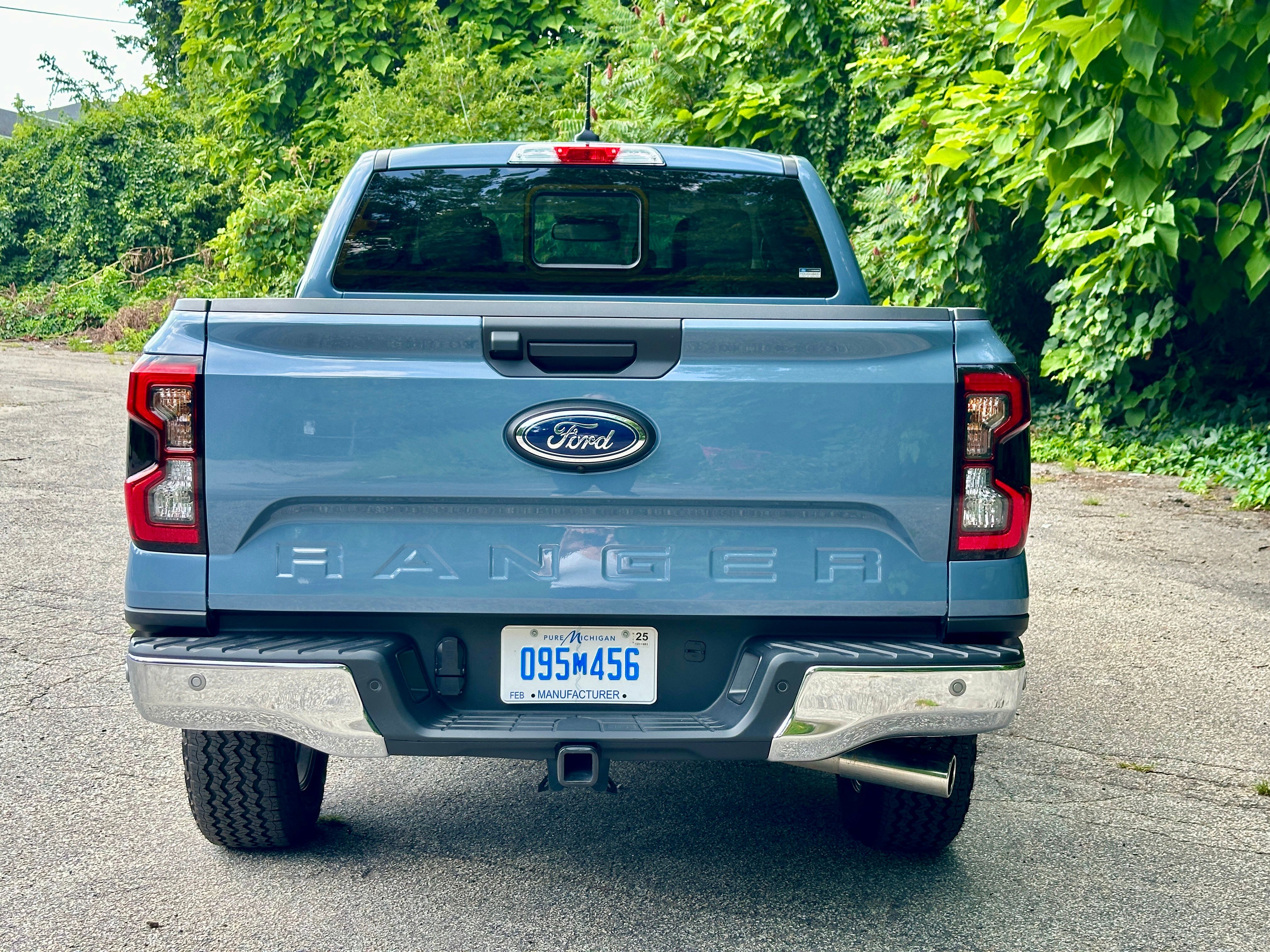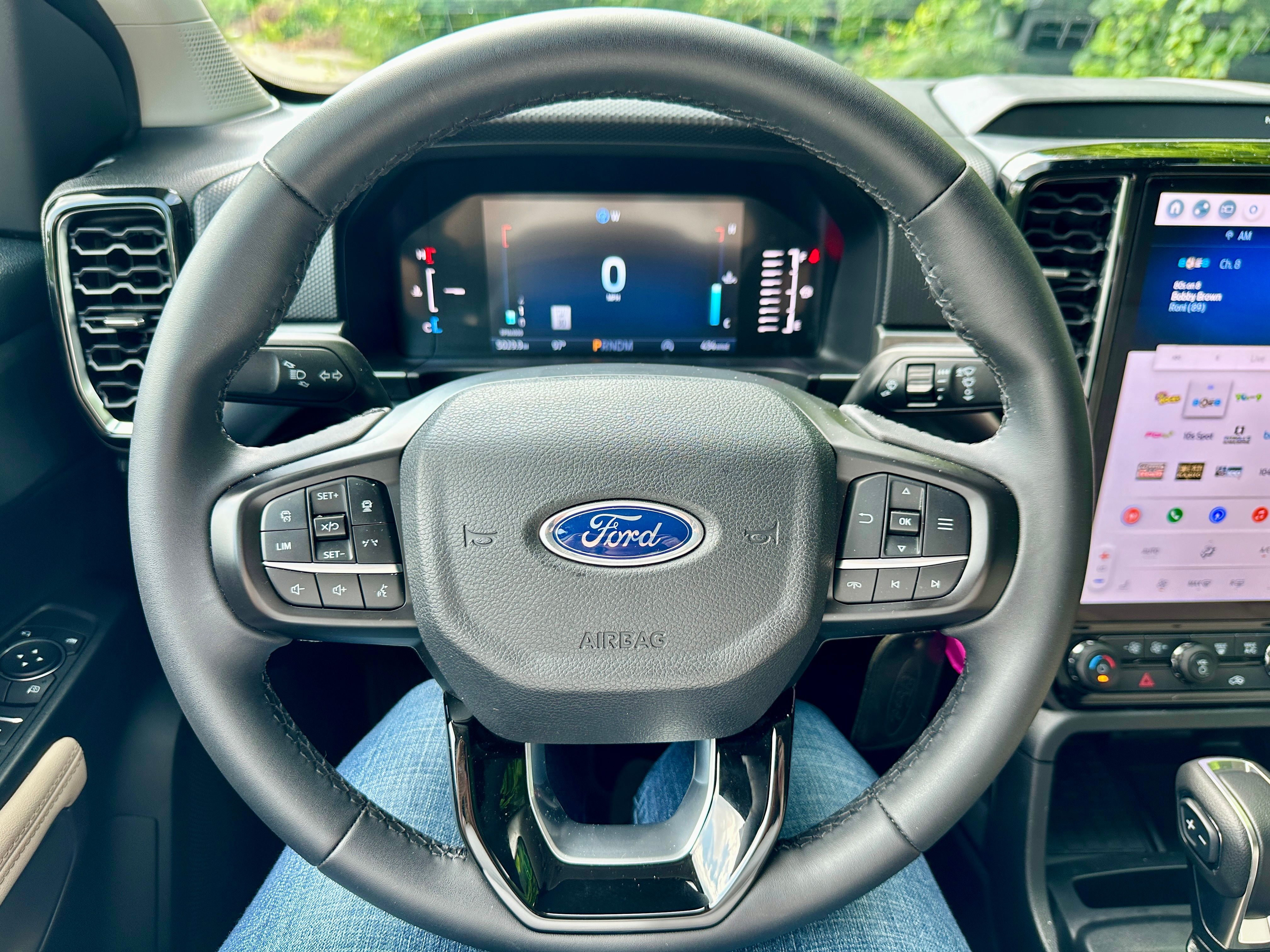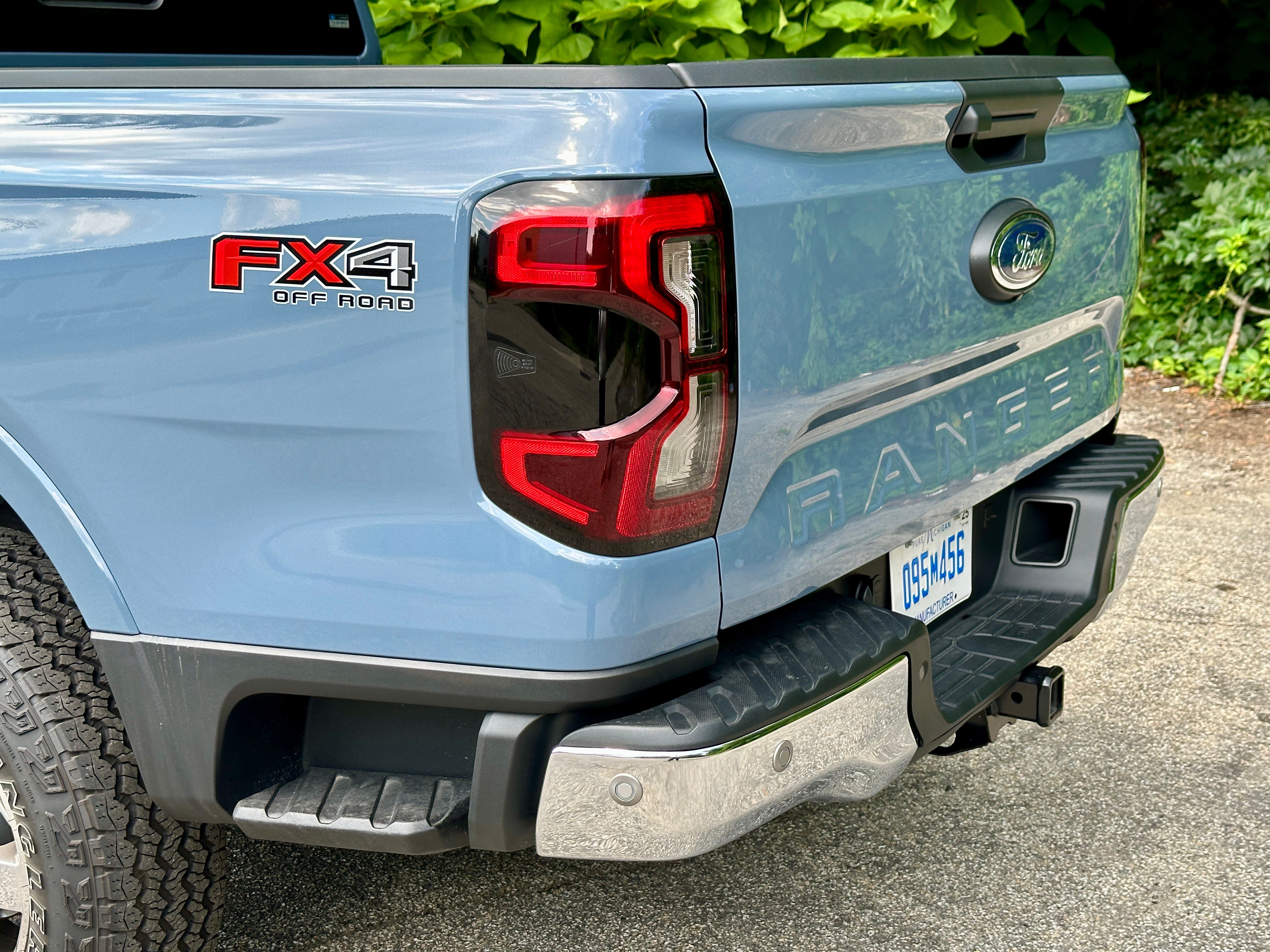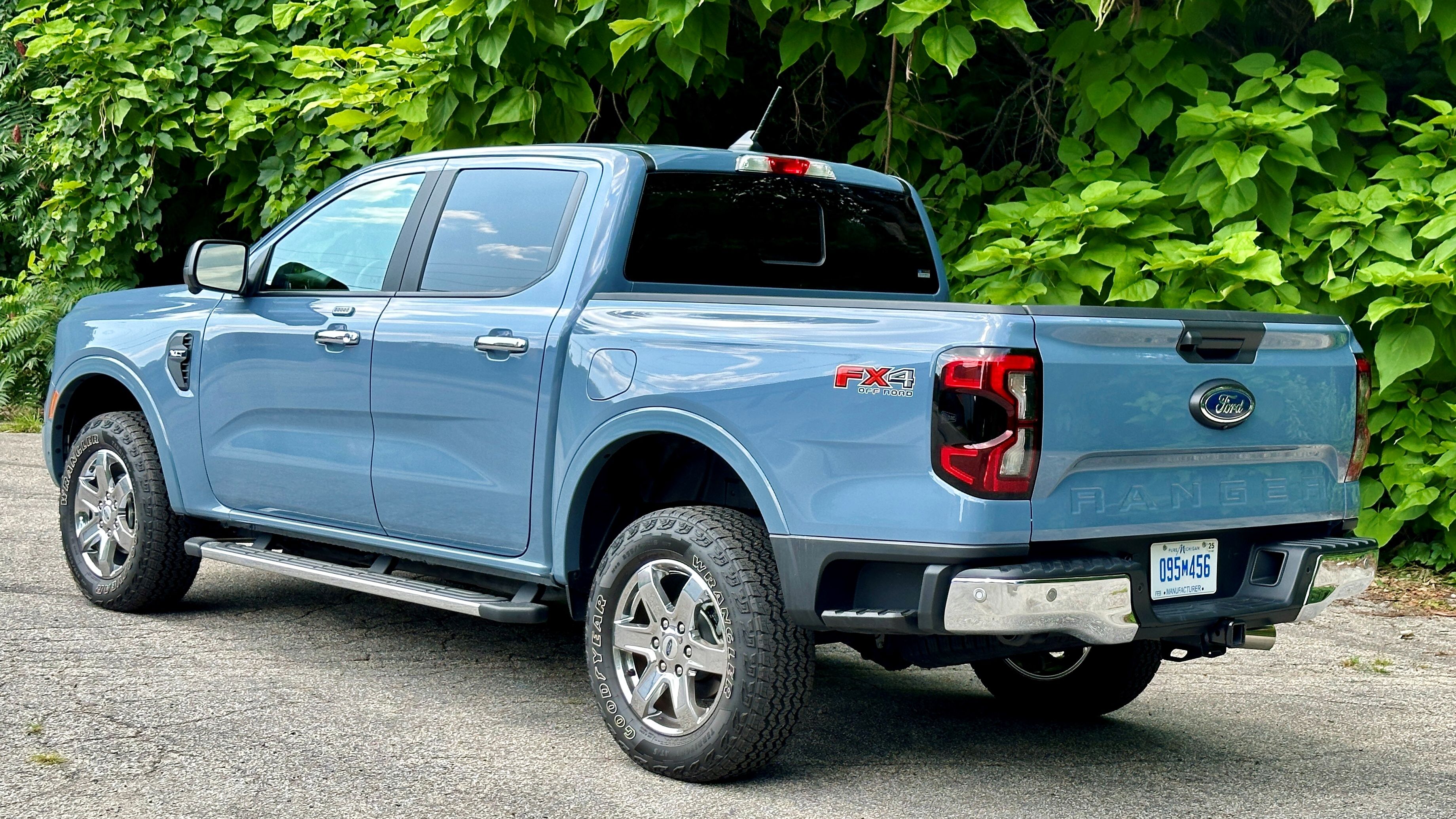The Ford Ranger made its return in the US for the 2019 model year, making legions of midsize truck fans deliriously happy. The 2024 Ford Ranger marks its first full redesign since its return, and it’s a significantly improved truck. While the SuperCab was discontinued, the big news is what Ford added rather than what it took away. There’s a new, more powerful engine option along with a new Ranger Raptor trim for hardcore off-road enthusiasts.
There’s a styling update, too, to bring the Ranger more in line with the look of the full-size F-150. Inside, there are new materials, a new infotainment touchscreen, and an overall more eye-catching and premium look. A few clever storage tricks are also a part of the redesigned Ranger including under-seat storage for the rear seats and fold-flat rear seatbacks. The 2024 Ford Ranger gets a lot of things right making it even tougher competition for the likes of the Nissan Frontier and Toyota Tacoma.
Here’s what it was like to live with for a week.
Exterior: Now Available In Only A Single Body Style
The previous version of the Ranger was available in two body styles. There was an extended cab (SuperCab) with seating for four and two smaller half-doors. In addition, there was a crew cab (SuperCrew) with seating for five and four full-sized doors. This year, only the crew cab remains, which is just fine with us. It’s far easier to get into the rear seats with four full doors making it a more versatile option. Dimensions look as follows:
- Wheelbase: 128.7 inches
- Length: 210.6 inches
- Width: 79 inches with mirrors
- Height: 74.4 inches
The design itself is new with unique grilles for each trim level. There are more aggressive wheel arches and C-clamp headlights and taillamps that resemble the F-150. It’s an appealing truck with a new bolder front end making it look more like a truck and less like a toy. It doesn’t stray too far from the rest of the Ford truck lineup and, in fact, makes the lineup look more cohesive overall.
Interior: New Materials And Upgraded Trims Elevate The Ranger
The Ranger is a nicely appointed truck, but it never reaches the luxury you’ll find in the F-150. It doesn’t reach that price point either, so it’s a fair trade. The Ranger sits just below the F-150 and above the Maverick, making it the happy medium. It’s the best of both worlds, which is what makes it such a popular truck. Now available solely as a crew cab with seating for five and four full-size doors, it’s easy for adults and kids to climb inside and get comfortable.
There’s plenty of room for even tall adults in the Ranger with ample headroom and legroom no matter where you choose to sit. Three will easily fit in the back, though the bench seat isn’t going to be the most comfortable option for longer trips. Leg room is tight, and it feels a little upright against the back seat. Up front, however, even a long trip won’t wear on the driver or passenger.
|
2024 Ford Ranger Interior Dimensions |
|
|---|---|
|
Headrom Front | Rear |
39.8 | 38.3 inches |
|
Legroom Front | Rear |
43.7 | 34.6 inches |
|
Shoulder Room Front | Rear |
57.1 | 56.7 inches |
|
Cargo Volume In Bed |
43.5 ft³ |
Base trims get cloth seats with an 8-way manually adjustable driver’s seat and 6-way passenger seat. We were in the mid-range XLT, which was equipped with the optional 10-way power driver’s seat and an 8-way power passenger seat. This made it easy to get the right driving position. The Lariat gets even more premium features with heated front seats for cold winter days. The cloth seats are attractive with a textured pattern and a durable look and feel, but cloth is always tricky. It doesn’t take much to stain cloth seats, so use caution if you tend to eat greasy burgers when you’re driving.
Cargo: Clever Storage Options Let You Bring Along Everything
Yes, a truck needs to be able to carry a payload and tow a trailer, but it also needs to have plenty of room inside for carrying all the little stuff. The Ranger does a fantastic job of using its interior space with hidden storage and even adjustable storage depending on whether you have a full crew of people or need more room for cargo. This includes new fold-flat rear seats. They easily fold down onto the seat cushions, creating a uniform flat surface. No worries about things being tipped at an angle on the seat cushions when they can be placed on this flat surface instead.
For smaller stuff you want tucked out of the way, there’s also storage underneath the rear seats. Flip the seat bottom cushion all the way up and there are several small storage cubbies. This is a great spot for keeping precious items out of sight or for the stuff you want on hand just in case but might not need to access all the time. Even with the seat bottom in place, there’s a little extra room behind the seat backs. Up front, there’s a large center console and an available second upper glovebox for holding even more of your stuff.
Towing/Payload: At The Head Of The Class
The Ranger isn’t a full-size truck, so it doesn’t have the huge towing and payload ratings of full-size trucks, but it’s no slouch either. The exact figures depend on how you configure your Ranger, but it maxes out at a payload of 1,805 pounds and a tow rating of 7,500 pounds. That beats both the Toyota Tacoma and the Nissan Frontier.
|
Ford Ranger vs The Competition |
|||||
|---|---|---|---|---|---|
|
Payload |
Towing |
||||
|
Ford Ranger |
1,805 lbs |
7,500 lbs |
|||
|
Nissan Frontier |
1,480 lbs |
7,150 lbs |
|||
|
Toyota Tacoma (Gas) |
1,705 lbs |
6,500 lbs |
|||
|
Toyota Tacoma (Hybrid) |
1,710 lbs |
6,000 lbs |
|||
In addition, it’s loaded with features that make carrying cargo easier. There’s an available integrated step in the box behind the rear tires, and it fits both feet, not just one foot. That doesn’t sound like a big deal until you’re balancing on one foot trying to wrangle something on the bed. Having a step wide enough to firmly stand is fantastic. The tailgate gets its own nifty features, doubling as a workbench with an integrated ruler and clamp pockets.
Additional available features include a 400-watt power inverter so you can power a grill for your next party or run tools when you’re getting work done on a job site. There’s also new zone lighting, which lights up the area around the truck along with bed lighting to light whatever is in the truck, making nighttime adventures easier. On the tech front, there’s Pro Trailer Backup Assist and Trailer Reverse Guidance, so even those who are new to trailering can get the job done easily. Its combination of features and capability make managing cargo in the Ranger a breeze.
Infotainment: Larger Screens With More Features
Ford upgraded the infotainment in the Ranger with larger screens and more features. Not only does this make it easier to use, especially if you’re following a complex navigation route, but it makes the interior look more premium. Small screens, though they work, just feel cheap. Increasing the screen size makes the Ranger look more modern and more upscale.
There’s now a standard 8-inch digital instrument cluster with a 10.1-inch infotainment touchscreen. Those screens get even bigger with an available 12.4-inch cluster and 12-inch infotainment touchscreen.
The system controls everything from drive modes to off-road information and the audio system, which is six speakers on base trims or a 10-speaker B&O sound system higher in the range. There’s a nice combination of touchscreen controls with physical controls, so things you often adjust, like climate and volume, don’t require popping open a touchscreen menu. Rounding out the infotainment features are two USB ports and an available wireless charging pad. Over-the-air updates will also be available, improving a system that’s already solid with new features over time.
Performance: A New Engine With More Power
There are two engine options this year, starting with the carryover 2.3-liter 4-cylinder. It delivers 270 horsepower with 310 lb-ft of torque and is paired to a 10-speed automatic transmission. New this year is a 2.7-liter twin-turbocharged V6 with 315 horsepower and 400 lb-ft of torque with the same transmission.
We’ve driven the Ranger with both engines, and it’s pretty much what you’d expect. The base engine is fine with plenty of power to get the Ranger moving without hesitation. The V6, however, makes everything better. It still accelerates smoothly, but it’s more aggressive so merging into heavy highway traffic is less stressful. If performance is your priority, then this is the engine for you, but know there is a sacrifice in fuel economy.
Equipped with rear-wheel drive, the 4-cylinder gets an EPA-estimated 21/25 MPG city/highway, which drops 1 MPG with four-wheel drive. The V6 is rated at 19/23 MPG city/highway, which could eat into your budget if gas prices rise. It’s a trade-off that we think is worth the extra fuel costs.
There’s also the Ranger Raptor, which is all-new and sits at the top of the Ranger lineup and deserves a separate review, but we will at least mention it here. This off-road focused vehicle is quite different from the rest of the lineup with the capability to manage rocks, dirt, mud, and all sorts of challenging terrain. It’s also very much a performance truck with a 3.0-liter twin-turbocharged V6 that produces 430 horsepower with 405 lb-ft of torque that will let you take a jump and catch serious air. Unsurprisingly, it has the worst fuel economy of the lot with an EPA-estimated 16/18 MPG city highway, but it’s also ridiculous fun.
Drive Impressions: A Well-Mannered Truck That Gets The Job Done
The Ford Ranger is an easy truck to drive. Its size makes navigating parking lots and narrow city streets less of a challenge, and it has the power you need to make short work of highway merges. It’s not outright aggressive, but it’s not a slowpoke and is happy to deliver the speed you need without hesitation. The base engine is likely fine for most, but the new V6 is the way to go if you want a bit more oomph and put a priority on performance. Either way, there’s a minimum of engine noise unless you really mash the gas.
The ride is improved compared to the prior generation of the Ranger. It handles bumps and dips with less bounce and absorbs more of the rattle on rough pavement. A drive into Boston on roads that were in various stages of being repaved showed off just how well the Ranger handles. The endlessly changing road surface wasn’t an issue and tire noise wasn’t intrusive.
This is a great mid-size truck and does the job of being a nice truck to drive while also providing the ability to tow a trailer and manage a payload. A wider track width this year lets you stow larger items with more than four feet between the wheel wells and the towing assist features truly make the job easier, even for novices. We found the Ranger comfortable, well-mannered, and easy to drive both on the highway and winding back roads.
Pricing and Verdict: Something For Everyone With Affordable Pricing
Full-size trucks get expensive fast, while the mid-size segment remains more affordable. The 2024 Ford Ranger comes in four trims, starting with the XL at $32,720, not including the $1,595 destination fee. The XLT comes in at $36,160 with the Lariat at $43,680. The top Raptor is $55,620. That top trim might cause a bit of sticker shock, but that’s a very specialized truck for a very specific customer who puts a priority on off-road performance. The bulk of the lineup, especially the XL and XLT, are quite affordable options.
The 2024 Ford Ranger gets the updates it needed to stay competitive with vehicles like the Toyota Tacoma and the Nissan Frontier. Neither of those offers anything in the same league as the Raptor, but the Tacoma does offer a hybrid engine, which is something the Ranger lacks. Overall, however, the Ranger is well-priced with great capabilities, a versatile interior for cargo or people, and an attractive, comfortable interior.

